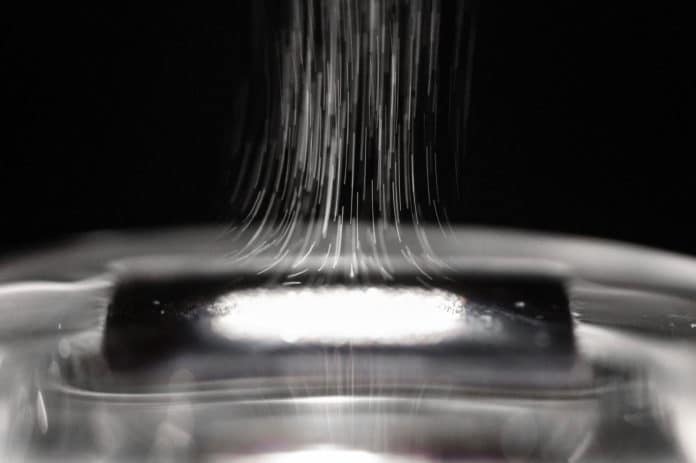Scientists at Linköping University have developed a cheap and eco-friendly steam generator to purify water using sunlight. As compared to direct water evaporation, the rate of steam production of this steam generator is 4-5 times higher.
Seawater desalination and wastewater cleaning advancements are the principal techniques against the global freshwater shortage. Among these innovations, solar‐driven evaporation is successful in extricating freshwater by productively using solar energy. Be that as it may, building a feasible and low‐cost solar steam generator with high conversion efficiency is still a challenge.
In a new study, scientists have developed a steam generator composed of an aerogel – containing cellulose-based structure decorated with the organic conjugated polymer PEDOT: PSS.
The polymer can retain the energy in sunlight, not least in the infrared part of the spectrum, where much of the sun’s heat is transported. The aerogel has a porous nanostructure, which means that large quantities of water can be absorbed into its pores.
Professor Simone Fabiano, head of the Organic Nanoelectronics group in the Laboratory of Organic Electronics, said, “A 2 mm layer of this material can absorb 99% of the energy in the sun’s spectrum.”
There is a porous and insulating floating foam located between the water and the aerogel, such that the steam generator is kept afloat. The heat from the sun vaporizes the water, while salt and other materials remain behind.
Tero-Petri Ruoko, a postdoc in the Laboratory of Organic Electronics and one of the authors of the study, said, “The aerogel is durable and can be cleaned in, for example, saltwater such that it can be used again immediately. This can be repeated many times. The water that passes through the system by evaporation becomes very high-quality drinking water.”
Simone Fabiano said, “What’s particularly nice about this system is that all the materials are eco-friendly—we use nanocellulose and a polymer that has a very low impact on the environment and people. We also use very small amounts of material: the aerogel is made up of 90% air. We hope and believe that our results can help the millions of people who don’t have access to clean water.”
Journal Reference:
- Cellulose‐Conducting Polymer Aerogels for Efficient Solar Steam Generation. DOI: 10.1002/adsu.202000004
